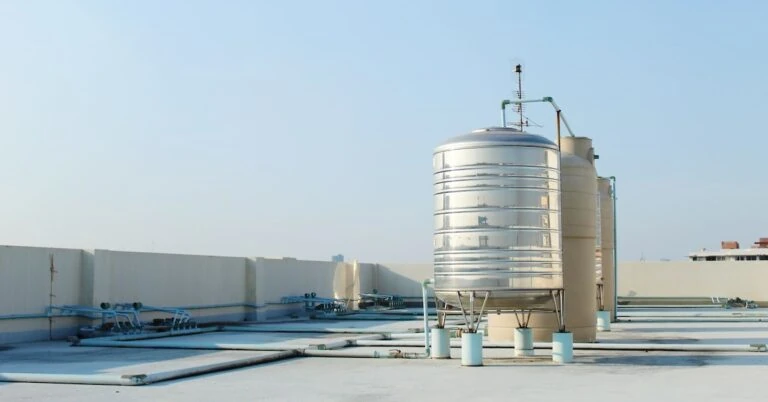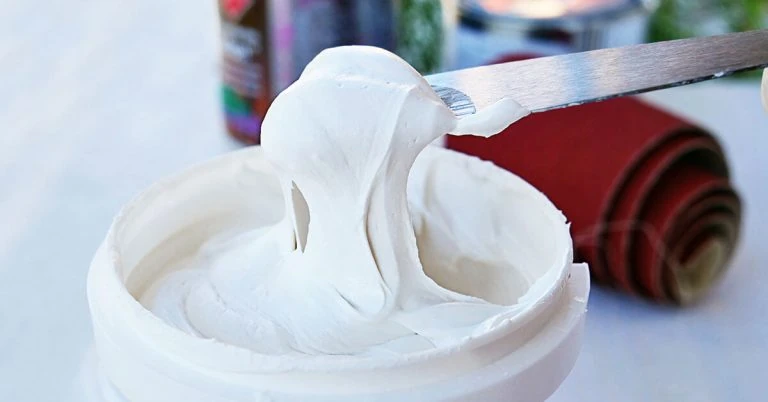Home Decorating Tips


Home Decorating Tips
Tank Lining 101: Learn about Waterproofing Tanks
Posted on October 18, 2023
Last updated June 18, 2025
At home, you probably use gas tanks for cooking food. In gated communities or even residential homes, a water tank is lofted high above all the structures or built on the ground floor. On the road, you can also spot gas tanker trucks delivering fuel to stations or vice versa.
When making tanks, manufacturers often have to consider the material, size, and purpose of these items. However, no matter what the answers to these considerations are, the application of tank lining is a must. This material can be used to protect the tank’s contents from being affected by chemicals or other substances.
In the event you are constructing a new tank, learn why tank lining is important and how to execute tank lining waterproofing with this read.
What Is Tank Lining?
This is a lining that can be applied inside and outside of a tank to prevent instances of chemical leaks and protect the contents of the tank. It is meant to cure at low temperatures.
Tank lining may help provide capabilities like resistance against corrosion and ensure that tanks made of metal, plastic, and/or concrete are durable.
When choosing the tank lining for your next project, it’s essential that this material provides an impassable and dense barrier, sticks to the substrate or surface, and closes any gaps.
Types of Water Tank Lining to Consider
Just as tanks can be used for many different purposes and made out of various materials, so can tank linings. These are some of the tank linings you can encounter:
Epoxy tank lining: This lining, made from material of the same name, can be utilized in fuel tanks in crude oil facilities and water tanks in wastewater collection facilities. It’s a good choice for people who want their tanks to be resistant to chemicals and moisture, and free of solvents. Epoxy tank lining application is recommended for tanks that need to remain strong and withstand high-temperature environments.
Polyurethane tank lining: This can be utilized in building water, concrete, or chemical tanks. Polyurethane tank lining can be utilized in interior and exterior applications, provide resistance to both chemicals and UV rays, and withstand high temperatures (at least depending on the formulation).
Polyurea tank lining:This “newer” type of tank lining is said to be utilized often in water and wastewater treatment plants. Moreover, polyurea tank lining is able to resist abrasions, delivers strength and flexibility, and offers elongation properties.
This type of tank lining is also free of solvents and can withstand chemicals and gases it is exposed to. You can also consider this tank lining if you’re aiming for faster application, given that it requires less curing time.
Vinyl ester tank lining: This tank lining is commonly used for storing chemicals. Vinyl ester tank lining is able to withstand high-temperature environments, reduce the risk for chemical damage, and provide solid “defense” against chemical infiltration and contamination.
Cementitious tank lining: This material can be further classified into two types: one with epoxy lining and another with polymer modified cementitious lining. Cementitious tank lining may help the tank safely store chemicals or cement.
A unique feature about cementitious tank lining is its potential to be used for underground tanks. Cementitious tank lining is known to be vapor permeable and is beneficial in waterproofing tanks that retain or collect water.
Zinc tank lining: This contains a material called zinc silicate. Zinc tank lining is anti-corrosive and the additives and binders found in the lining may help with waterproofing. As such, it can be used in tanks that aim to store chemicals.
Zinc tank lining can be effective since it seeps through the “capillaries” and “pores” of the tank. Moreover, these can be used in lining solvent tanks as they can withstand the aforementioned substances.
You can also ask a trusted industry expert to help you determine the ideal type of tank lining for your next project and ensure that it is applied correctly, without any errors.
Waterproofing Tank Lining: Is It Recommended?
Although important, the presence of water can be a threat and cause widespread damage. This is where the process of waterproofing comes in, by ensuring that a certain structure repels water entirely (becoming waterproof) or prevents some amounts of water from entering it (becoming water-resistant).
Waterproofing is usually done on roofs, walls, and rooms like basements. However, did you know that it is possible to waterproof tank lining too? This can help ensure that the substance in the tanks, especially if it’s potable water, is free of contaminants and unwanted substances that can affect its quality.
Over time, water leaks can occur and cause the appearance of cracks. This prompts soluble salts to enter the tank and trigger some sort of structural damage to it. In some instances, foreign substances and even bacteria may enter through the leaks or the cracks, induce fungal growth, and negatively affect the quality of the substance within the tank.
Tank Lining Waterproofing Tips to Consider
Convinced about the benefits of waterproofing tank lining and want to ensure the tank’s long-term durability? Here are some waterproofing-related tips you can keep in mind:
Do your research and choose tank lining that offers waterproofing capabilities: Make sure you’re working with an already-reliable base before applying waterproofing products onto it. Fortunately, epoxy, polyurethane, polyurea, vinyl ester, and cementitious tank linings are known to offer waterproofing capabilities. Moreover, consider whether the tank lining will be applied internally or externally too.
Ensure that the tank lining and the material the tank is made of are compatible with each other: This will ensure that the waterproofing products to be used will not react with the tank lining, the material of the tank itself is made of, and the substance being stored in it. Being extra careful during this step may reduce the risk for any unwanted chemical reactions or changes that can delay the project or affect the materials stored inside the tank.
Invest and use high-quality products: Island Premium Paints offers many products that may be utilized for different surfaces (and tank materials).
For exterior applications, use TEX-A-KOTE Primer 2800 White as your primer, followed by either TEX-A-KOTE Gloss 2800GL White or TEX-A-KOTE Flat 2800 FL White, and finish with TEX-A-KOTE Penetrating Sealer 2803 Clear. These TEX-A-KOTE products will help ensure that the tank fulfills its purpose and remains durable for a long time.
If you plan to build an underground concrete tank that is horizontal, don’t forget Concretobond 3001. This specially developed water-based acrylic polymer is meant to be combined with powder aggregate containing Portland Cement to provide an impenetrable barrier with high tensile strength, flexibility, and low shrinkage.
Read package instructions: When using any of the mentioned products, make sure to carefully read the package instructions to know how to properly use these and check for other products you may need. Don’t forget to wear protective face and eye gear and follow package instructions regarding application, storage, and disposal too.
When in doubt, ask the help of a professional: The process of waterproofing tank lining, or even just applying tank lining, can be tedious, especially if you’re a beginner. An industry professional with many years of experience can help you figure out not only the best type of tank lining for your project and how to waterproof it, but also ensure that it is applied seamlessly.
With Island Paints, you can successfully oversee all the requirements and preparations needed for applying tank lining, ensure it properly undergoes waterproofing, and provide a long-lasting durable tank that will safely and effectively do its job.
Get more home improvement and home decoration tips when you head over to the Island Paints website. Browse through multiple guides on some of the ideal products and techniques for your desired surface.
References:
https://www.tanksforeverything.co.uk/what-is-water-tank
https://www.corrosionpedia.com/definition/1828/tank-lining
https://www.flexi-liner.com/2019/10/31/7-common-types-of-water-tank-linings/ https://imcdistributors.com/benefits-of-using-industrial-tank-linings-and-why-important/
https://www.water-tanks.co.uk/epoxy-tank-coating-and-lining/
https://www.coldwaterstorage.co.uk/blog/what-is-the-best-water-tank-coating/
https://www.advancedheatingandac.com/tank-lining-types-you-should-know-about/
https://preservationtreatments.co.uk/what-is-waterproofing/
https://www.coldwaterstorage.co.uk/blog/how-can-i-make-my-water-tank-waterproof/
Our Products
Our line of high quality paints and products will give your home or project the vibrancy it needs.
Explore Colors
Ready to explore colorful possibiliies today? View our popular paint colo combination palettes for great color schemes and room design ideas for interior and exteriors.



